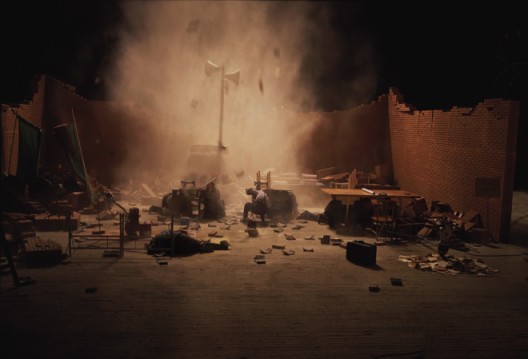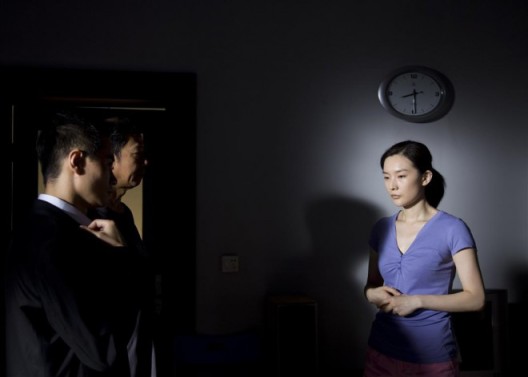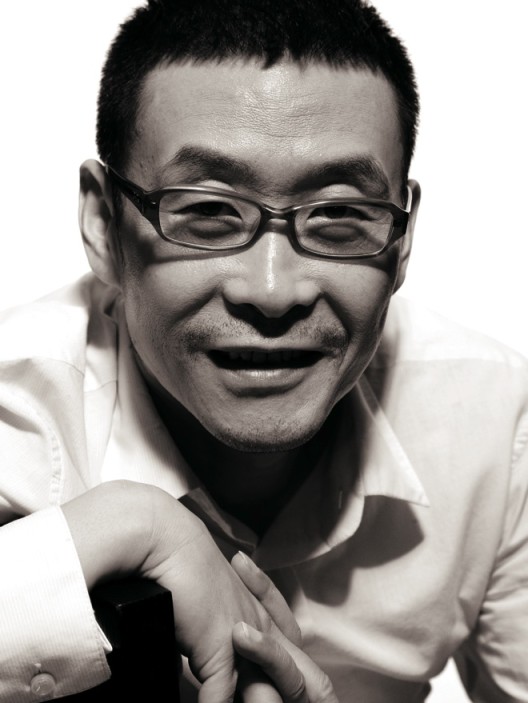Gifted with the brush, Wang Jianwei began painting maps for the army in his native Sichuan at the age of 17, during the last phase of the Cultural Revolution in 1975, the year before the death of Mao Zedong. During this radical period, any books on art that departed from the mandated Socialist-Realist orthodoxy were subject to censorship, and most often were destroyed or confiscated by Red Guards. Books on the history of western Modernism were among those especially forbidden to the general public. “It was during this period that I first set eyes on the image of a painting by Picasso,” recalled the artist in 2007.1 How was this possible?
“In the library of my army base. There were old books on Western art history that had gone unnoticed for years. Because it was an army base, no one thought to look for them there; and if they did, no one dared to touch them.”
With the hindsight of forty years of the artist’s subsequent practice, one that continues to be inspired by a love of reading that hardly ever is as urgent except in a person who has once been denied it, we can trace in this memory analogs of principal themes that persist in Wang’s work to this day.
One such theme is the implication that the prevailing values of contemporary society can be terribly erroneous no matter how much they seem to derive from consensus. While today it seems universally self-evident in China that anyone should be allowed to regard the image of a Picasso painting in a book, forty years ago it was quite the opposite, and the majority was blind to any alternative.

汪建伟,《人质》,HD彩色有声视频,32分钟,2008
Although this particular sight since has been restored, Wang’s work reveals that contemporary society remains afflicted with other forms of blindness, with false values that, if left unchecked, potentially are as erroneous and as widespread. These include the globalized dangers of a manic consumerism imported from the West and intensified by social conformism; a heightened distrust of others that falsely rationalizes selfishness and social disengagement; mindless flight into the narcosis and sublimated violence of electronic entertainment; and other indignities that, like these, are by no means confined to China, and whose obsessive character denies reason and history.
A second theme incipient in the artist’s memory of his experience in the army library has to do not with blindness but with perception: the leitmotif of the revelation of multiple and intersecting planes of reality. Within the artist’s immediate situation we have the world of the military base: here, ironically, an oasis of relative order and—however unintentionally on the part of the authorities—a locus of relatively unrestricted learning. Even under the most conventional circumstances, a military base posits a parallel society with its own hierarchies, values, laws, norms of behavior, legal structures, dress codes, police, and usually even its own electrical power plant. In this case, however, the bizarre conditions of the Cultural Revolution ensured an extreme disparity between the relative order and efficiency of the base, and the chaos and violence of the society at large, a world in which conventional hierarchies were upended with the consistency of carnival, but with much more cruelty than parody.
Add to these traces in the artist’s memory the experience of the book at once forbidden and not forbidden, impossible and palpable—depending on which plane of reality was to mediate it, that of the outside world of greater China, or that of the provincial base. The book evokes not only a further plane, that of representation—or, insofar as it revealed images of foreign art works, representations of representations—but also the book doubly removed realities of both the West itself, and of a history seen hitherto in China through a different prism than that which the West’s own images would assume.
These intersecting planes of reality presuppose a system of different times that continually operate in tension with each other in a dynamic process: the rigidly scheduled time of military life in which free time for reading becomes an anomaly, the accelerated time of violent social change in the world beyond the gates of the base, and the glimpse of a recorded historical time as it unfolds in the reading, and the implicit temporal dynamics in the Picasso itself (since Cubism poses points of view both multiple and simultaneous). At the center of this dynamic is the time of the book’s reception in which, here, the young artist-soldier-as-reader foreshadows those who would become the audience of his works.

(All works by Wang Jianwei; © 2014 Wang Jianwei, used by permission)

(All works by Wang Jianwei © 2014 Wang Jianwei, used by permission)(Photo: Xu Boxin; courtesy the artist)
This acknowledgment of the centrality of a temporal dynamic in his work is one the artist makes explicit in his recorded statements about his most recent public exhibition at New York’s Guggenheim Museum: “Time Temple”2. In these statements, the artist describes the making of the works, the exhibition, and its reception, as a changing process that presupposes a dynamic temporal relation. These three metonyms of distinct times with planes of reality proper to each (making, exhibition, and reception) are further reinforced by the three media that presuppose their own temporal relations. Without even considering the content these chosen media represent or embody, as it were, internally, it is revealing to examine their a priori temporal implications as media signifiers distinct from that which they signify; for in Wang Jianwei’s work, the selection of medium is never merely a given, but instead always has a reason that transcends its mere presence, and ensures a complex of aesthetic tensions with whatever its signified content represents.
The first stage of Time Temple is a grouping of paintings and sculptures whose deployment constitutes a static installation. These traditional plastic media are “frozen” with respect to time, and therefore they presuppose a temporal tension with the plane of reality of the spectator whose temporal condition is dynamic by definition.
The second stage is a film, a time-based medium that nevertheless generates by virtue of editing, an autonomous time that is distinct from that of the spectator who, incidentally—and contrary to the experience of viewing the first stage—has stopped traversing space in time, but ought to remain stationary in order to perceive the work.
A live theater work, the third stage unfolds in a real time that is contemporaneous with that of the spectator even though its content may well evoke a further complex of temporal possibilities.
From this cursory description that should serve only as a precursor to any analysis of the actual content of the intersecting planes of reality, and the corresponding temporal dynamics the work generates, it should already be apparent that this work is a sum of conceptual concerns of a strategy that develops very early in Wang Jianwei’s work and which not only reveals itself across many media, but which also accounts for the reason why the adoption of diverse media is a sine qua non for the effective execution of the strategy. As such, the progress of Wang Jianwei’s work is not a development in the conventional sense; neither it is it a sequence of repetition. More accurately, it is a system of mutually reinforcing extensions of art propositions and their variations that would define not only our multiple ways of perceiving reality, but also the delusional assumptions and obsessions we derive from them.
By now, most examples of this extensive and unified body of work neither exhibit the strokes of a brush, nor resemble the work of a cartographer, but much more than the maps Wang Jianwei painted for the army when he was seventeen, they help us to fix our direction.
1 In conversation with the author, Beijing, spring 2007.
2 See the video interview with the artist online at the Guggenheim Museum page for the exhibition

汪建伟

汪建伟创作于他的北京工作室,2014年(徐伯欣摄,艺术家提供,汪建伟版权所有© 2014,经授权许可后使用)

(All works by Wang Jianwei © 2014 Wang Jianwei, used by permission) (Photo: Xu Boxin; courtesy the artist)

(Solomon R. Guggenheim Museum, New York; The Robert H. N. Ho Family Foundation Collection)(This work was created on the occasion of the commission Wang Jianwei: Time Temple, presented at the Solomon R. Guggenheim Museum, New York, and made possible by The Robert H. N. Ho Family Foundation)
(All works by Wang Jianwei © 2014 Wang Jianwei, used by permission)

(Solomon R. Guggenheim Museum, New York; The Robert H. N. Ho Family Foundation Collection)(This work was created on the occasion of the commission Wang Jianwei: Time Temple, presented at the Solomon R. Guggenheim Museum, New York, and made possible by The Robert H. N. Ho Family Foundation)
(All works by Wang Jianwei © 2014 Wang Jianwei, used by permission)